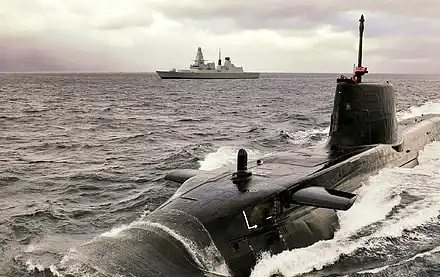




Airbus

The Airbus C295 medium tactical transport aircraft has reached 300 orders. From the Pacific Ocean to the Arabian desert, from the tropical jungle to the Sahel and the Kazakh steppe, the C295 and its market share have become a success story for the European and Spanish aerospace industry. Here are 45 interesting facts and figures about the aircraft:
From the first C295 to the 300
1. The Airbus C295 has reached 300 orders following the Republic of Kazakhstan’s acquisition of a third aircraft, in transport configuration, for the National Security Committee Aviation Service. This new aircraft joins the two C295s already operated by this agency.
2. In 1999, the Spanish Air and Space Force became the first customer of the C295 by acquiring nine aircraft, in transport configuration, with the first aircraft being delivered in 2000.
3. The C295 is the market leader in the medium tactical transport category with more than 80% of the market. There are currently 41 operators from 37 countries in Europe, the Americas, Africa and Asia. Of these 41 operators, 19 have made repeat orders.
4. India is the largest customer for the C295, with 56 units, 16 assembled in Seville and the remaining to be assembled by Tata in Vadodara, India. In September 2023, the Indian Air Force (IAF) took delivery of the first aircraft. Delivery of the second aircraft is scheduled for May 2024 and the next 14 will be delivered at a rate of one per month until August 2025.
5. So far, the C295 has accumulated 610,000 flight hours among all its operators. The operator with the highest number of flight hours is the Spanish Air and Space Force with more than 90,000 flight hours. The Brazilian Air Force has the C295 with the highest number of flight hours, accumulating more than 9,000 flight hours.
6. Following the success of the C212 and CN235, Construcciones Aeronáuticas (C.A.S.A.), the origin of Airbus in Spain, decided to launch the C295, the natural evolution of the CN235, a slightly larger aircraft with 50% more capabilities.
7. Compared to its predecessor, the C295 is characterised by a more powerful engine, the Pratt & Whitney Canada PW100 of 2645 hp, a new propeller, and a redesigned wing, among other changes, but maintaining as much as possible the commonality between both platforms.
8. The name C295 stands for C for CASA, 2 for the number of engines and 95 for the maximum payload initially planned: 9.5 tonnes.
9. The programme was officially launched in 1996, construction of the prototype began in early 1997 and the first flight took place in November of that year in Getafe, Madrid. In November 1999, the Spanish National Institute for Aerospace Technology (INTA) militarily certified the aircraft for the first time.
10. The development of the aircraft is performed by Airbus engineers, mainly Spanish, but still a success story of Airbus’ European endeavour.
11. The 35th Wing of the Spanish Air and Space Force operates its fleet of C295s in transport configuration from the Getafe Air Base. For example, these C295s form part of the Ivory Detachment in Senegal to support Mali in the fight against jihadism.
12. The Spanish National Institute for Aerospace Technology (INTA) has been operating a C295 since 2023 for scientific research, such as geospatial data collection (agriculture, geology, atmosphere, inland waters).
13. In December 2023, the Spanish Ministry of Defence also acquired 16 C295s in maritime patrol and surveillance configurations. These aircraft, which will be designed and manufactured entirely in Spain, reinforce the defence industrial footprint and national sovereignty.
14. The C295 MPA acquired by Spain is the most advanced mission configuration and the C295 with the highest capabilities. A major development project that will bring together the latest technologies to provide a major operational advantage to our customers.
15. Design and engineering work on the C295 is carried out at the Airbus facilities in Getafe.
16. The Tablada plant in Seville carries out the pre-assembly of large components for the C295, such as the fuselage, which is then assembled on the final assembly line (FAL).
17. The C295 FAL is located at Airbus’ San Pablo Sur facilities in Seville.
18. The assembly of an aircraft is a complex process that depends on many manufacturing variables but, as an approximation, it could be said that a C295 in transport configuration is delivered in a period of between one and two years. Delivery times for a standard mission version would be from 2 years. This time may increase depending on the configuration selected.
19. Between 200 and 250 people are directly involved in the C295 manufacturing process.
20. The final assembly process is divided into four parts: integration, testing, painting and flying.
21. The production of the C295 is characterised by digitalisation, with tablets or mixed reality glasses being used to assemble the parts instead of paper.
22. Another FAL is currently under construction at Vadodara in India for the production of 40 of the Indian Air Force’s 56 C295s. Delivery of the first "Make in India" C295 is scheduled for 2026.
23. The San Pablo Norte facility performs maintenance, repair and overhaul (MRO) on C295s already in service with various customers.
24. Pilots, maintenance technicians and loadmasters from different C295 customers are trained at the International Training Centre (ITC) in San Pablo, with courses lasting between 2 and 60 days. The ITC has two C295 flight simulators, one with Thales Avionics and the other with Collins Avionics.
25. Since the delivery of the first C295 aircraft, approximately 700 pilots and 1,700 maintenance technicians have been trained and qualified at ITC.
26. Airbus provides support at C295 operators' air bases through its service personnel to ensure the highest possible fleet availability. Airbus Field-Service Representatives (FSR) are currently deployed at C295 bases in Burkina Faso, Brunei, Canada, Colombia, Egypt, India, Ireland, Kazakhstan, Mexico, Portugal, Senegal, Serbia and the United Arab Emirates.
27. The C295 is characterised by its versatility, both in terms of missions and configurations. The best-selling version of the C295 is the transport version, capable of carrying 70 military personnel or 48 paratroopers, VIP personnel, container loads, vehicles or pallets. Serbia, Poland and Mexico are some of the operators of the transport version.
28. The C295 can be converted into an air ambulance with up to 24 stretchers and 7 medical assistants or even intensive care. During the COVID-19 crisis, in humanitarian disasters such as Cyclone Idai in Mozambique or war conflicts such as Afghanistan or Mali, the C295 has been used in medical evacuation configuration (MEDEVAC).
29. The maritime patrol version (C295 MPA) carries out surveillance, anti-submarine and anti-surface warfare missions, thanks to the use of active and passive sensors, a magnetic anomaly detector and a high-performance radar.
30. Maritime and land surveillance and search and rescue are the main missions of the MSA (Maritime Surveillance Aircraft) variant, acquired by Portugal, Chile, Oman, Brazil, Saudi Arabia, United Arab Emirates, Canada, Ireland, Angola and Spain.
31. The C295 can also be configured to support Special Operations, with incremental configurations ranging from a transport aircraft to an internally armed and/or under-wing mission aircraft to perform close air support (CAS) operations.
32. The mission C295s are equipped with the FITS (Fully Integrated Tactical System) mission system, developed by Airbus Defence and Space, which enables the C295 to perform roles ranging from anti-submarine and anti-surface warfare (ASW) to search and rescue (SAR), maritime patrol (MPA), signals intelligence (SIGINT) and environmental protection, among others. FITS can be remotely operated from land.
33. The C295 can also be used as a tanker aircraft for aerial refuelling of other aircraft or helicopters, in both day and night operations. This requires the installation of a roll-on/roll-off kit.
34. Versatility, reliability and low cost are the hallmarks of the C295 and have made it a global success. In the most demanding deployments, it has achieved fleet availability rates of over 95%. This is the case of the two Spanish Air and Space Force C295s, which operated for an average of 160 hours per month for 11 months in Chad in support of the EUFOR mission to improve security in the region.
35. Senegal is using the C295 in the United Nations Multidimensional Integrated Stabilisation Mission in Mali (MINUSMA). For example, in just 14 days in 2024, they flew 28 flights averaging 16 hours per day (221 hours in total). During these flights, they covered 43,400 nautical miles (about 80,000 km) and carried 1,000 passengers and 56 tonnes of cargo (at an average of 2 tonnes of cargo and 35 passengers per flight).
36. The C295 is capable of taking off and landing on short (STOL), soft-surfaced, unpaved runways, making it the ideal aircraft for theatres of operation around the world, from desert and arid to frigid and tropical climates.
37. An example of an STOL capability is the use of roads by Polish or Finnish C295s as runways to prepare for an attack.
38. In June 2023, a Colombian Air Force C295 transported the four children who had spent forty days lost in the Colombian jungle to a hospital in Bogotá. Once it was known that the children had been found, a C295 was modified in just an hour and a half to become an air ambulance. The pilot landed with night vision goggles on an unprepared runway with no tower, where the children were picked up and flown to Bogotá.
39. The C295 cruises at altitudes of up to 30,000 ft but also excels at low altitudes and low speeds, ideal for maritime patrol missions.
40. The missions of the two Irish Air Corps C295s include monitoring illegal fishing in their fishing grounds and pollution from vessels near their coastlines.
41. Portugal often uses its C295s to transport patients in need of medical care between the islands of the Azores or Madeira archipelago or to the mainland.
42. During the COVID-19 crisis, the 35th wing of the Spanish Air and Space Force transported masks and food rations in a C295 to the island of Tenerife, off the coast of Africa, while Brazilian authorities loaded the aircraft with respirators in Sao Paulo, bound for Fortaleza, in the north-east of the country. Other C295 operators used it to transport citizens infected with the virus.
43. The Chilean Navy has used its C295s to support firefighting in the Biobío region in the south of the country, while Colombia has used the aircraft to create water lines to fight fires in Vichada, on the border with Venezuela.
44. The C295 is also used for the shipment of humanitarian material, as in the case of the Philippine Air Force, which sent 1,500 aid boxes to Visayas and Mindanao following the floods that affected these regions of the country.
45. The C295 can also fly on up to 50 per cent sustainable aviation fuel (SAF), a blend of waste oils, vegetables and fats, free of aromatics and sulphur, without modifications to the aircraft, as part of the military aviation decarbonisation goal.